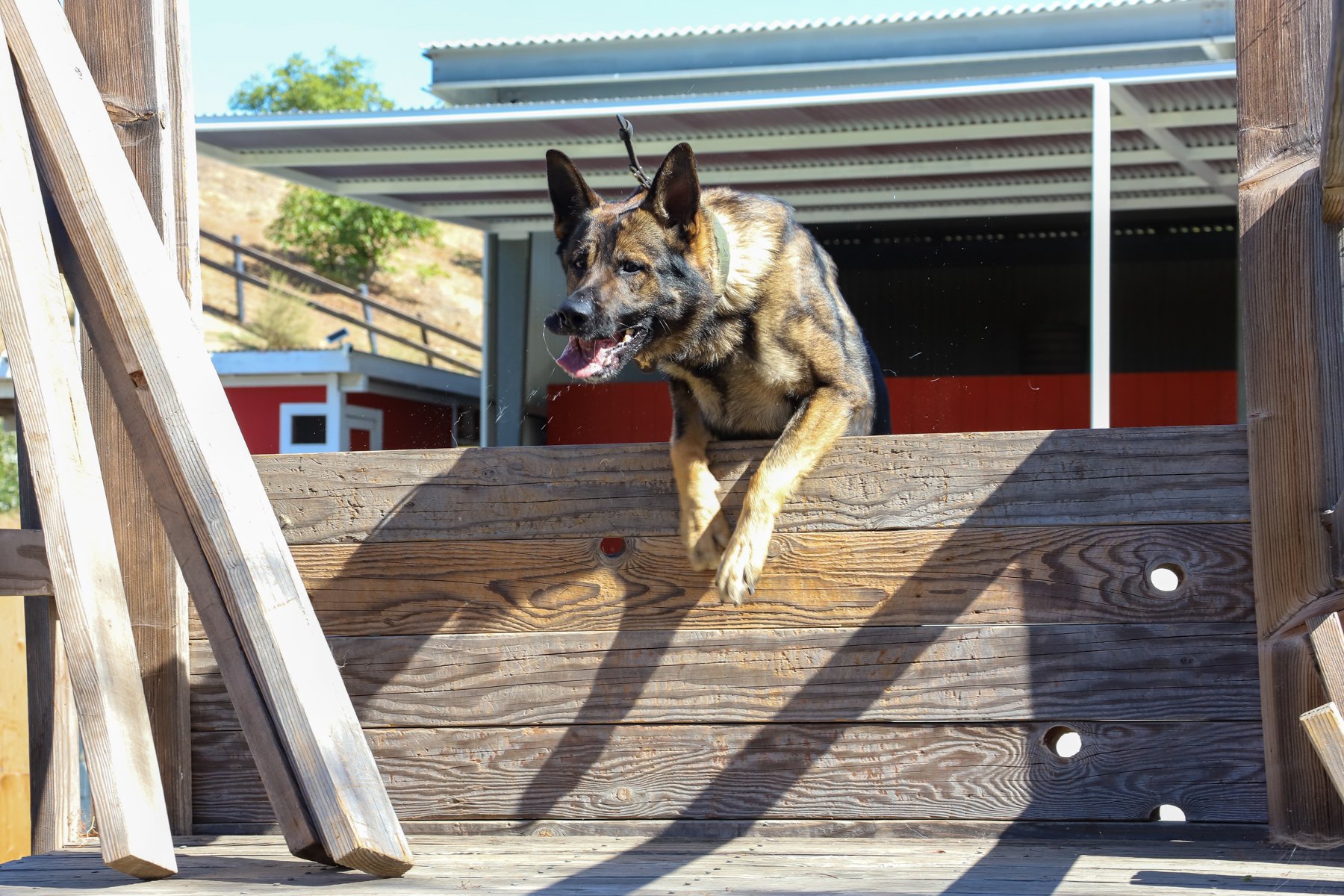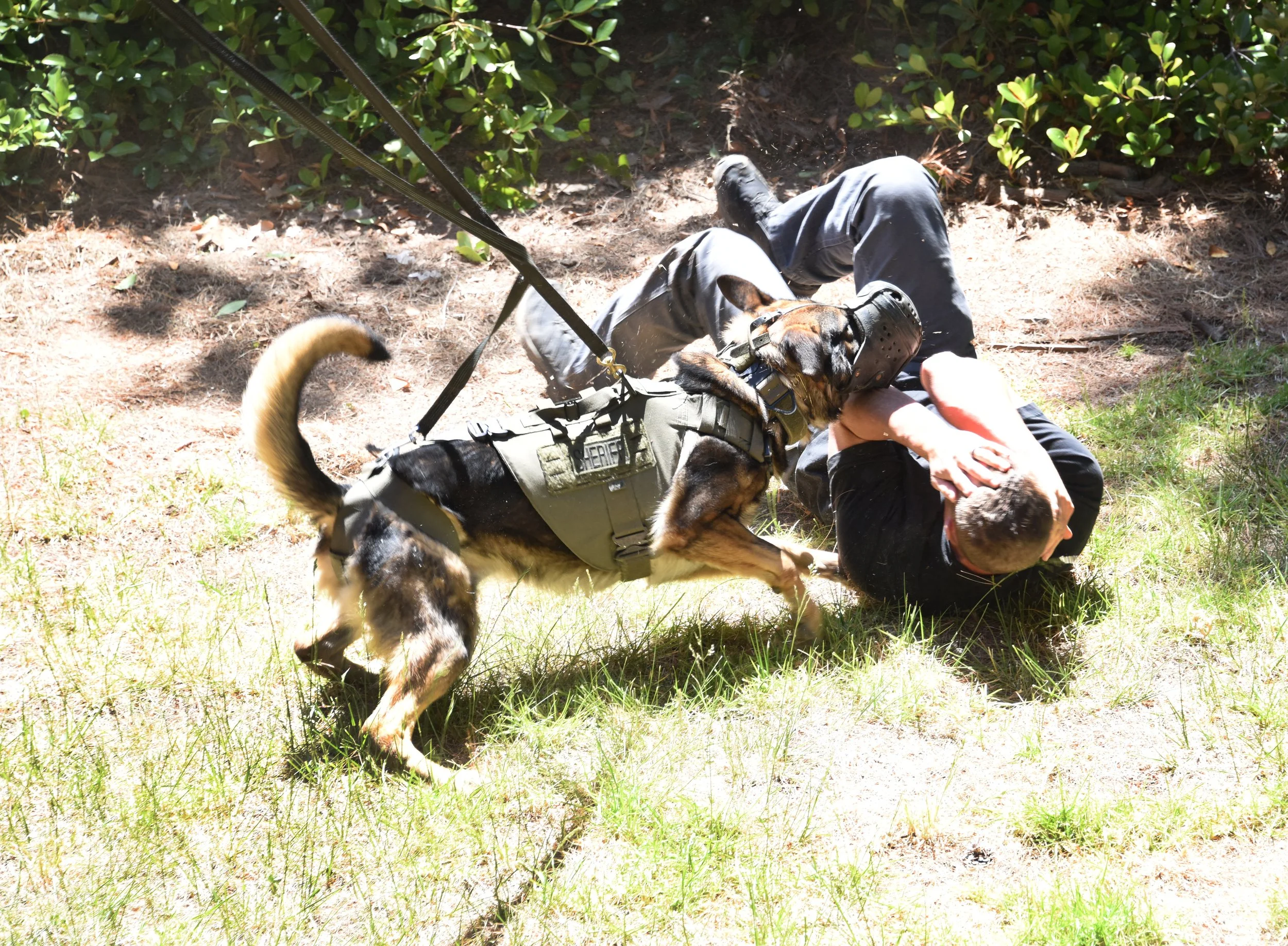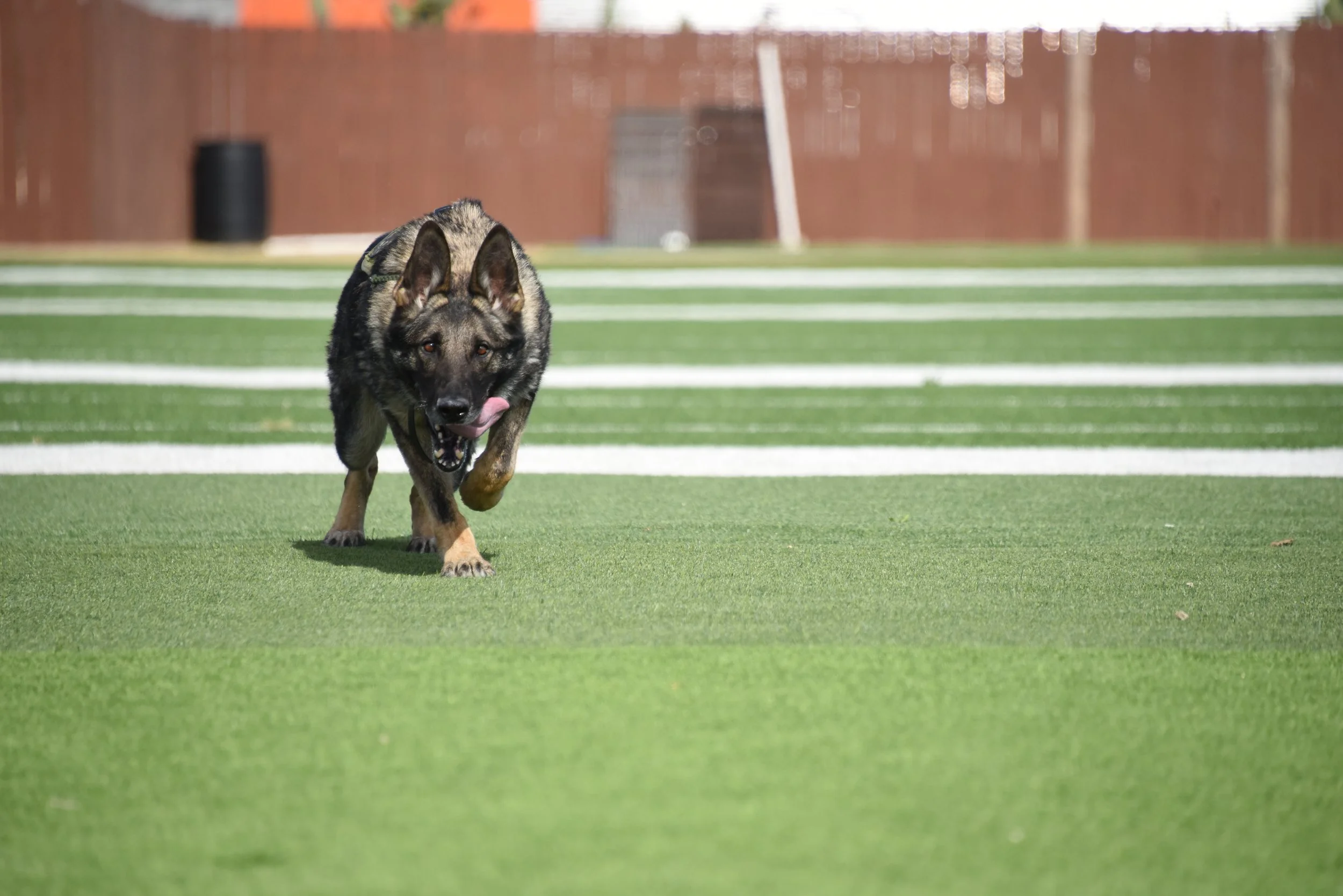A police dog, also known as K-9 or K9 (a homophone of canine), is a dog specifically trained to assist members of law enforcement. Dogs have been used in law enforcement since the Middle Ages. The most commonly used breeds in law enforcement are German Shepherds, Belgian Malinos and Dutch Shepherds. Other breeds that you might see used by law enforcement depending on the task they are needed for are Bloodhounds, Labrador Retrievers, Beagles, German Shorthaired Pointers and Belgian Tervuren’s. Police K-9’s will usually assist law enforcement and serve the community for 5-8 years, depending on their health during their service.
Law enforcement agencies will require a K-9 to be certified with their handler in some basic tasks such as obedience, handler/officer protection, suspect apprehension, building/area searching and detection before they can be utilized by law enforcement.
(From the National Police Dog Foundation- nationalpolicedogfoundation.org/about-k9s
About K-9’s
THERE ARE THREE COMMON CLASSIFICATIONS OF POLiCE K-9’S
Patrol: These dogs are used to provide patrol duties (officer protection, suspect apprehension, area or building clearance, and security in sensitive or controlled areas.
Detection: These dogs are used to find either narcotics OR explosives. Note it is either one or the other.
Tracking/Trailing: These dogs are trained to track for suspects and lost / missing adults or children in urban and rural areas.
Dogs used in law enforcement are trained to either be “single purpose” or “dual purpose” K9s.
Single purpose dogs are used primarily for either patrol duties or detection duties. We also have single purpose K9s that are used only for tracking, lost persons location, or cadaver detection.
Dual purpose dogs are trained to combine patrol work and detection work. A lot of agencies use dual purpose K9’s because the cost of the dog and training costs so much it benefits the agency to have one dog trained to do both functions.







FAQs
How does a police agency purchase a police dog?
Many police agencies do not have a budget for police dogs, so they are purchased by public and/or corporate donations. Agencies may also need additional donations for the initial dog training, veterinary bills, food, equipment and safety equipment for the dog.
Why are K-9s not part of a department’s regular budget items?
K-9s are considered a specialty unit, which means technically they could run a department without them, unlike police cars, police officers, and their training. 80-plus percent of a police department’s budget goes toward salary, and the remaining 20 percent is needed to acquire equipment and training for the officers. There are simply not enough funds for most agencies to include the cost of K-9s and their up-keep in the general budget.
What do police dogs eat?
Unlike the average family pet, a police service dog is extremely active and requires a diet formulated to meet its increased energy and nutrient demands.
Do you neuter and/or spay police dogs?
Females are normally always spayed because of their heat cycles and for medical benefits. Males may also often be neutered for medical or behavioral reasons.
What age does the dog retire?
Depending on its health the police dog will normally retire between 5-8 years of age.
Do police dogs live in the house or a kennel?
Normally after working a full shift they go to their kennel where they eat and get the much needed sleep and rest they will need for their next shift. However, it is not uncommon for them to come in the house on their days off, or even daily before or after their shift begins.
How much does the training cost?
The initial training and cost of the dog is between $18,000 and $20,000. Additional classes / courses that the K-9 team will attend cost between $500 - $5,000.
What does “K-9” stand for?
It is short for the species “canine”, or dog. When it is on the side of a police car it means the police car carries a working police service dog.
What breeds do they use for police dogs?
The most popular breeds are German Shepherds, Belgian Malinois, Dutch Shepherds, and occasionally mixes of these breeds. Less popular, but still used at times, are Rottweilers, Doberman Pinchers, and Bouvier de Flandres. Some of the other breeds that are used for Narcotics or Explosives Detection work are Labrador Retrievers, German Shorthaired Pointers, Beagles, and Golden Retrievers. Another breed of dog you will see that is used for tracking or trailing are Bloodhounds.
Do they use only males, or do they also use females for police service dogs?
Males and females both make excellent police service dogs.
What age does a dog begin working as a police dog?
The youngest age when they become mature enough to concentrate on training well is between 12 and 15 months.
Where does the dog go after he/she finishes a police career?
It lives at home with its handler to live out its life as a family pet.
How much does a police dog cost?
It varies, but because most police dogs still come from European countries, the cost for the dog and initial training is between $18,000 and $20,000.
What type of training do they receive?
The type of training the dog will receive depends on the task the dog is going to be used for. Patrol training usually consists of obedience, agility, building and area searches, suspect apprehension, handler / officer protection, evidence searches and detection of narcotics or explosives. Other dogs might be trained specifically for narcotics or explosives detection, tracking / trailing, human remains detection, human scent detection, which is often used for Search and Rescue after natural disasters.

